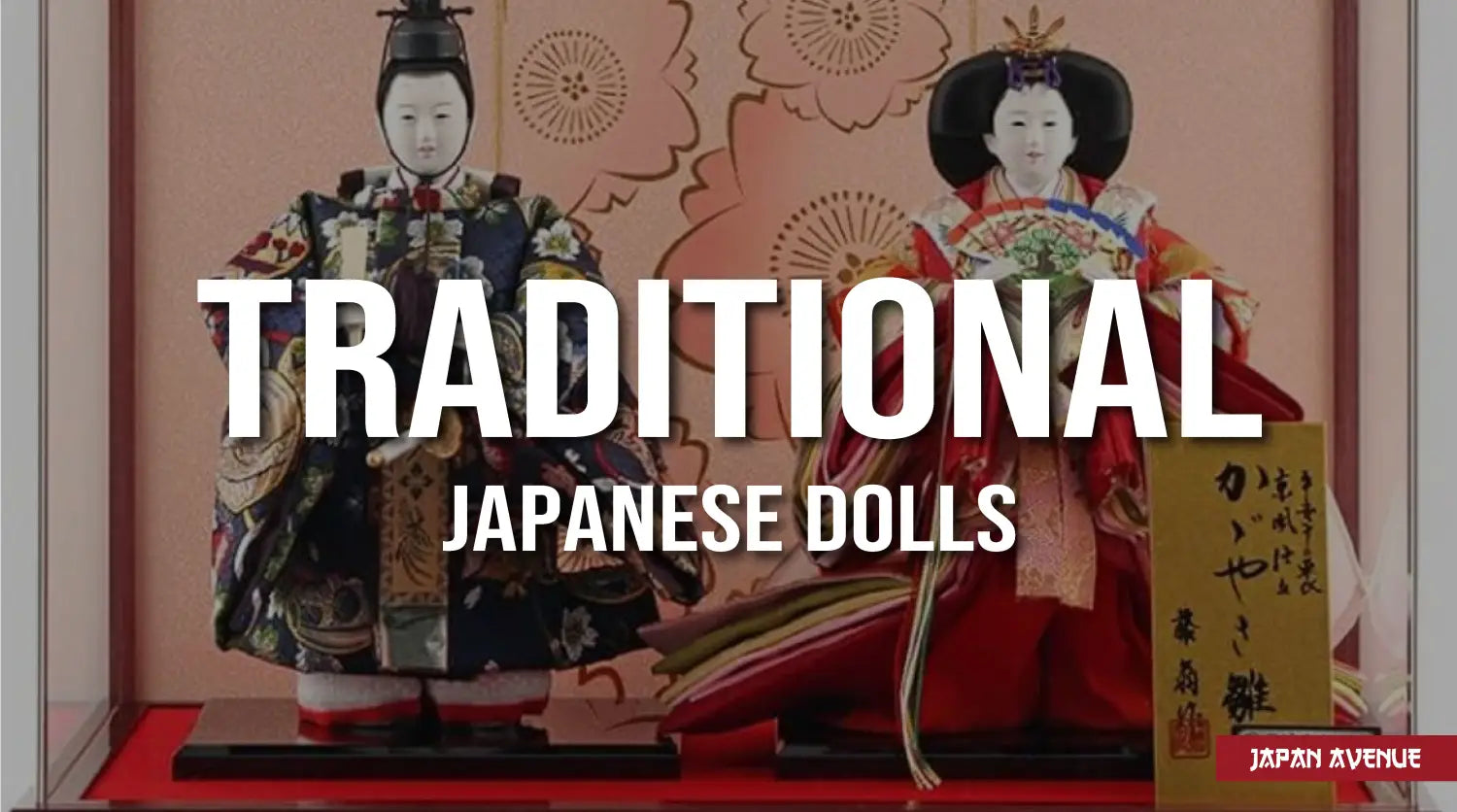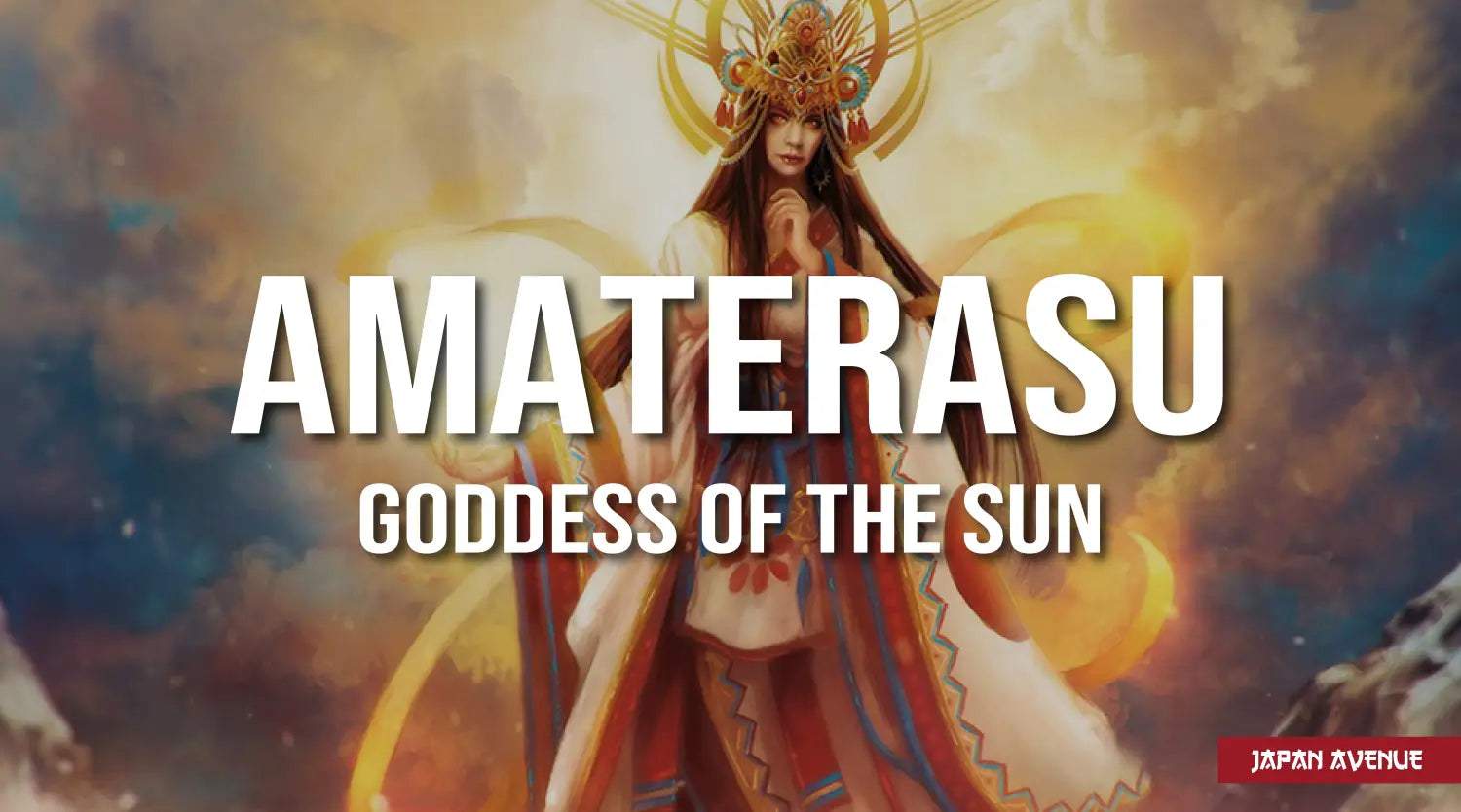In Japan, figurines and dolls are very popular and, unlike some people might think, they have nothing to do with the hype and trend of modern Japanese anime and manga.
Traditional Japanese dolls have played an important role in Japanese culture since the dawn of time and are considered to be true works of art. They are the result of many centuries of innovation, creation and refinement. A traditional Japanese art form that has never stopped evolving.
Here is a brief overview of the history, the style and the particularities of Japanese dolls that you can find in the Land of the Rising Sun.
The Japanese Kokeshi doll

Kokeshi dolls are wooden dolls consisting of a cylindrical body and a rounded head. The first Kokeshi creations date back about 150 years and originate from the Tohoku region in the north of the Japanese archipelago. These dolls were carved by woodworkers, decorated with floral patterns and covered by lacquer.
At that time, Kokeshi dolls were used as toys for children and souvenirs for Japanese tourists. These wooden figurines have a very paradoxical history and meaning. The word kokeshi means "child disappearance" and we will explain why. In dark times, when misery fell on a village, women were forced to kill their own children to avoid condemning them to starve to death. For each child that was killed, a Kokeshi doll was carved in its memory. In this way, no one could forget the sacrifice of these children for the survival of the village.
On the other hand, the Kokeshi doll symbolizes the wish and desire for a healthy child. In Japanese tradition, these beautiful wooden dolls are given to a person as a sign of friendship or love.
The Japanese Daruma doll

Daruma is a very popular lucky charm in Japan and much appreciated by tourists who love to buy it as a souvenir. This strange doll with its rounded shape, without arms or legs, represents the founder of Zen Buddhism, the legendary Bodhidharma. According to the legend, this man entered into meditation for 9 consecutive years, he cut his eyelids to avoid falling asleep and his limbs were atrophied due to not moving.
The Daruma doll is a lucky charm that allows to grant one wish. When you buy a Daruma, its eyes are blank. When making your wish, the first eye must be painted and then the doll must be placed in a prominent place so that it can be seen every day. Once your wish is granted, you can paint the second eye and make another wish with a new Daruma.
Japanese Hina doll

Hina ornamental dolls date back to the Heian period (794 - 1185) and are closely related to the Girls' Day, or Hina Matsuri, which takes place each year on March 3rd. This celebration originates from an ancient practice during the Heian period when nobility gave the imperial couple some figurines that represented the court and that protected them from evil spirits.
Nowadays, March 3rd is celebrated as a special day for every little girl in the country. On this occasion, the family gives the girl a new Hina doll to be added to the family collection. These dolls can represent the imperial couple, courtesans, musicians, ministers and samurais. Depending on the means of the family, this collection can count up to 15 dolls which are placed on a platform (hina dan) covered with a red carpet (dankake) according to a precise hierarchical order. This order may vary depending on the region of Japan, but the Emperor and his wife will always be positioned at the top.
The Japanese Musha doll

Musha dolls represent warriors and warrior women that can be in the effigy of the Emperor, the Empress, prime ministers and samurai, or even of fairy tale characters. The making of these warrior dolls is meticulous and of high quality, with an impressively high sense of detail as these figurines represent men and women in full armor, with helmets, weapons and sometimes even horses. Some versions of the Musha doll may have childlike features in strong contrast to the warrior image.
The Musha doll is closely related to the boy's day on May 5th, known as Tango No Sekku. In the days preceding May 5th, these dolls, representing military and mythical heroes, are displayed on a small three-tiered platform covered with a green cloth.
The Japanese Gosho doll

Gosho dolls depict chubby babies with large round heads, small limbs and a very white skin. These dolls can be either completely naked or dressed in beautiful and intricate clothing, with accessories and a typical Edo-era (1603 - 1868) hairstyle.
The Gosho doll, which literally means "palace doll", was made for the imperial court to be offered on behalf of the emperor to every emissary who came for a courtesy visit to the imperial palace. These chubby dolls were considered as gifts of good omen, protection and fertility. Contrary to what one might think, the Gosho doll is not made of porcelain but from a mixture of rice paste and crushed oyster shells.
The Japanese Kimekomi doll

Kimekomi refers, first of all, to a Japanese doll making technique. The dolls are carved in wood and decorated with pieces of cloth. This technique consists in cutting into the wooden piece in order to insert the edges of the fabric, directly glued on the wooden body. The head and hands are covered with gofun, a white paste obtained by mixing fine oyster shell powder with glue. Hair can be carved out of the wood or added as a wig.
Kimekomi dolls were created in Kyoto in the 1700's and according to the legend it was a servant working at Kamigamo temple who made this doll using scraps of cloth and willow wood found by the Kamo river. Originally, the dolls were named Kamigamo after the temple. Only later they were called Kimekomi, referring to the technique of making them. This wooden doll is very popular in Japan and there exist Kimekomi doll making kits for hobbyists.
The Japanese Karakuri doll

Karakuri dolls are automaton dolls that were very popular during the Edo period. They are the astonishing result of great artistic mastery, technical virtuosity and a touch of Japanese fantasy. Beneath beautiful silk clothes, this mechanical doll hides a whole system of springs and cogs that bring it to life.
These dolls are also known as zashiki karakuri, which literally means "room automaton doll". They were designed to entertain and amuse the guests during banquets at the imperial court, among merchants or simply in the living room of rich Japanese people.
The most popular Karakuri doll is probably the tea waiter automaton. This doll holds a tea tray in front of itself on which you can place a cup of tea. Once the cup is placed on the tray, the automaton starts to move towards the guest by making small movements of the head. When the cup is taken off the tray, the automaton stops and, when the cup is placed again, it returns to the host.
The Japanese Bunraku puppet

The Japanese puppet theater began in the Azuchi Momoyama period (1573-1603). Bunkaru puppets were carefully carved in wood and painted by hand. As for the head and hands, they were made by specialists - master puppet craftsmen - because of their great complexity. Indeed, the conception of the head must allow the face to change expressions during the story, and thus to go from the angelic face of a young girl to the terrifying face of a demon.
The main puppets are very high (from 1m20 to 1m50) and very heavy, they require the intervention of three people to make them perform. A first puppeteer controls the head and the right arm, the second puppeteer manipulates the left hand and the third moves the feet and the legs of the puppet. This organization requires an excellent coordination to ensure a natural movement of the puppet. Puppets representing secondary characters can be simplified and manipulated by a single person.





